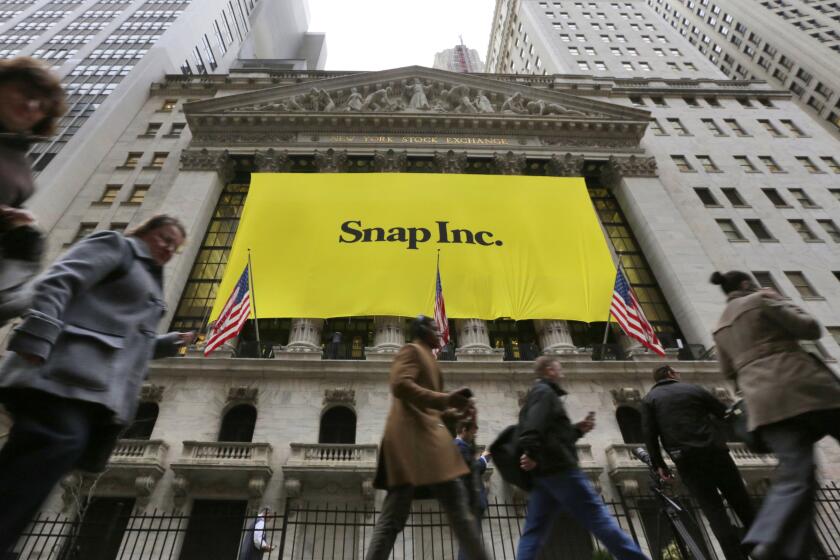Ways to Quantify Risk Carry Risks of Their Own
When staff members at the Securities and Exchange Commission proposed late last year that mutual funds include some type of quantifiable measure of risk in their prospectuses, they opened up a Pandora’s box.
Fund company attorneys, who draw up the prospectuses, simply don’t know what to make of the proposal. The problem is that several measures are being used to describe mutual funds’ riskiness. Most are complex, none is perfect, and all have the potential to mislead shareholders.
“No single method has been universally adopted to quantify risk,” Robert Frenkel, a vice president at Citibank Global Asset Management of New York, said during a recent conference for fund company attorneys in Palm Desert. “Significant disagreement exists as to whether any single method is most appropriate.”
That’s true enough.
On the other hand, there’s a growing sense that something needs to be done. Based on the timing of shareholder money flowing into and out of funds, investors’ returns don’t appear to match the long-term performances of the mutual funds they buy. People are evidently becoming rattled by unexpected volatility in their investments and selling out before they can reap long-term rewards.
“The reason investors have done so poorly with their mutual funds is that risk has been left out of the equation,” said Don Phillips of Morningstar Inc., the Chicago-based fund-rating firm.
Here’s a look at some of the major risk-measuring tools, how they’re used and what they can and can’t do:
* Beta. Expresses how closely the fund’s movements correlate with those of a market index, typically the Standard & Poor’s 500. A figure of 1 beta based on the S&P; would mean that the fund followed the S&P; exactly. A 1.1 beta, then, would mean that the fund is expected to go about 10% higher in good markets and 10% lower in bear markets.
However, Beta does not do a good job of measuring the riskiness of funds that don’t move much in line with the chosen index. Gold portfolios, for example, have low beta readings but can hardly be deemed conservative vehicles.
* Standard deviation. Tracks the month-to-month volatility of a fund by measuring the size of fluctuations from its average performance. The smaller those fluctuations, the lower the standard-deviation reading and the lower the risk. Standard deviation is a good way to level the playing field for the riskiness of different types of assets, but it treats returns above the average and below the average alike.
During a period of declining interest rates, for example, a bond fund’s standard-deviation score could be much lower than during a period of rising rates, Frenkel said. That is, the risk could be masked in a good market and exaggerated in a bad one. Further, if a fund gets a new manager or the manager changes strategies, the shift would not be reflected in the standard-deviation number.
* Duration. Evaluates a bond fund’s interest rate risk. In general, the sooner a fund’s bond holdings mature and the more interest they pay in the meantime, the lower the fund’s duration score and the less vulnerable it would be to rising interest rates. A fund with a duration of five years, for instance, could generally be expected to fall about 5% in value should interest rates rise one percentage point, and to rise about 5% in value should rates drop one point.
Besides being of no use on stock funds, the tool has other flaws. “Duration measures only interest rate risk and does not analyze credit and other market risks,” Frenkel said. Further, a fund’s duration continually changes as bonds are bought and sold and as interest rates themselves rise and fall.
* Proprietary ratings. Firms such as Morningstar, Value Line, Moody’s Investors Service and Standard & Poor’s have developed their own systems for assessing risks. Unfortunately, the companies have been reluctant to let their proprietary ratings be used in prospectuses because of liabilities that could be involved.
You get the idea: No single number, score, evaluation or ranking seems likely to gain acceptance as the required method of disclosure for the mutual fund risks discussed above. And that’s not even considering others such as inflation risk, currency risk or derivative dangers.
What’s likely is that fund companies will start experimenting on their own to better describe the volatility of their products and keep the SEC off their backs. In fact, this is happening already.
For example, the current prospectus for the Janus Funds of Denver discusses credit ratings, duration, currency risks and other dangers in a fairly succinct 28 pages. The prospectus includes a table that places all 13 Janus funds in a risk spectrum, ranging from conservative to aggressive.
This type of multifaceted response might well become standard.
“I don’t think any one number will work,” says Nancy Smith, director of the SEC’s Office of Consumer Affairs. “It may require a multi-pronged approach.”
Smith points out that many fund companies’ sales brochures paint a more understandable picture of a portfolio’s volatility than do their prospectuses. Her suggestion: Get a fund company’s marketing copywriters more involved in preparing prospectuses and the legal staff less so.
“We need to translate risk into something that people can really understand,” Smith told attorneys at the Palm Desert conference. “We need to put it in plain English and make it useful.”
*
Many domestic stock funds have become overly reliant on hot but volatile technology shares, Morningstar warns.
The 50 top-performing “diversified” stock funds on average have invested about 31% of their assets in technology companies. By contrast, tech stocks make up only 9% of the Standard & Poor’s 500 index.
If your stock fund has been a leader in recent years, check to see if it has a big current stake in the volatile technology sector, Morningstar suggests.
*
The oldest mutual fund management companies in the United States and Britain have linked up in a marketing alliance.
Massachusetts Financial Services of Boston will act as U.S. distributor of global investment products offered by Foreign & Colonial of London. The latter will market MFS products to non-U.S. investors.
MFS introduced the first American open-end mutual fund in 1924; Foreign & Colonial, a specialist in emerging markets, pioneered the idea of pooled investment funds in 1868.
The alliance involves no exchange of cash or securities between the companies.






